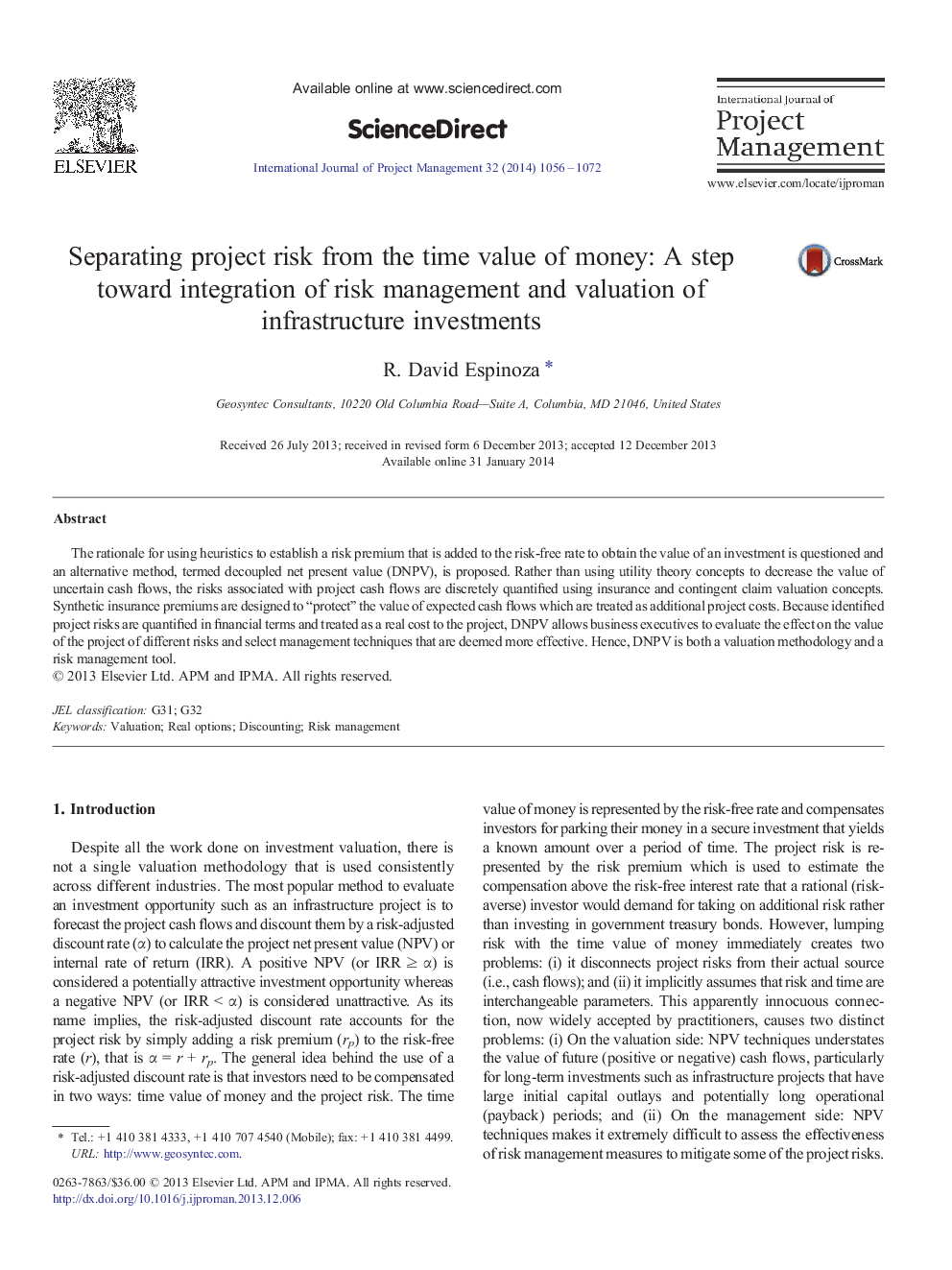| Article ID | Journal | Published Year | Pages | File Type |
|---|---|---|---|---|
| 275525 | International Journal of Project Management | 2014 | 17 Pages |
•DNPV is a new valuation methodology that decouples risk from the time value of money.•Two metrics are proposed: Financial metric (NPV) and a Risk metric (DNPV).•DNPV can be used as a risk management tool.•DNPV addresses Real Options theory shortcomings and it is simpler to understand.•Examples show how to calculate the discount rates based on the project risk profile.
The rationale for using heuristics to establish a risk premium that is added to the risk-free rate to obtain the value of an investment is questioned and an alternative method, termed decoupled net present value (DNPV), is proposed. Rather than using utility theory concepts to decrease the value of uncertain cash flows, the risks associated with project cash flows are discretely quantified using insurance and contingent claim valuation concepts. Synthetic insurance premiums are designed to “protect” the value of expected cash flows which are treated as additional project costs. Because identified project risks are quantified in financial terms and treated as a real cost to the project, DNPV allows business executives to evaluate the effect on the value of the project of different risks and select management techniques that are deemed more effective. Hence, DNPV is both a valuation methodology and a risk management tool.
Graphical abstractFigure optionsDownload full-size imageDownload as PowerPoint slide
